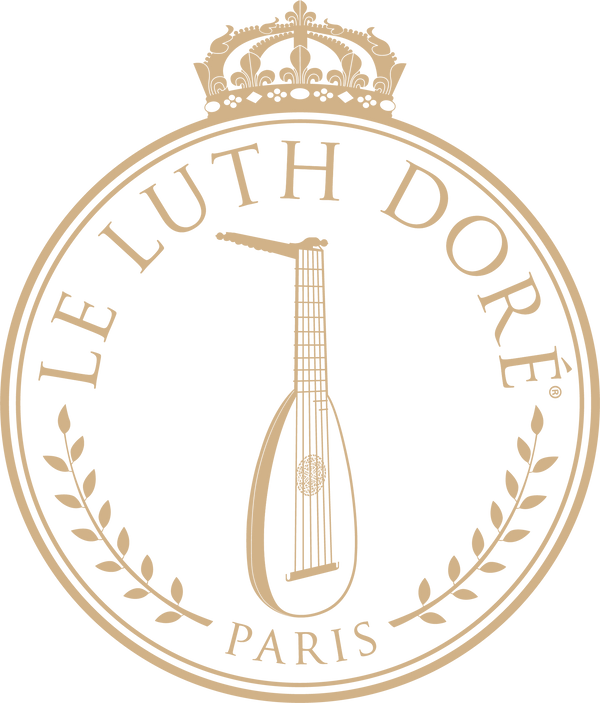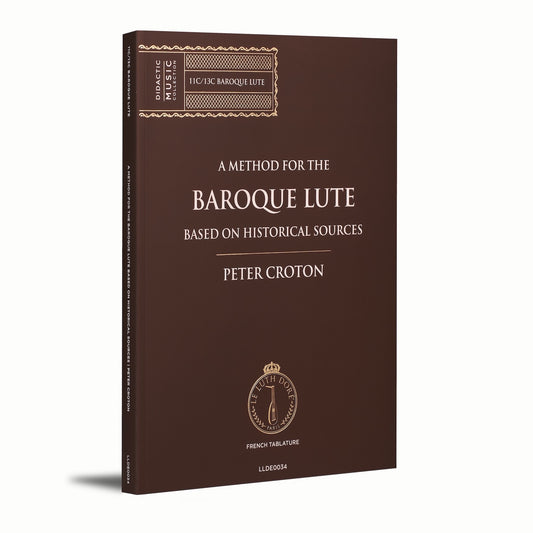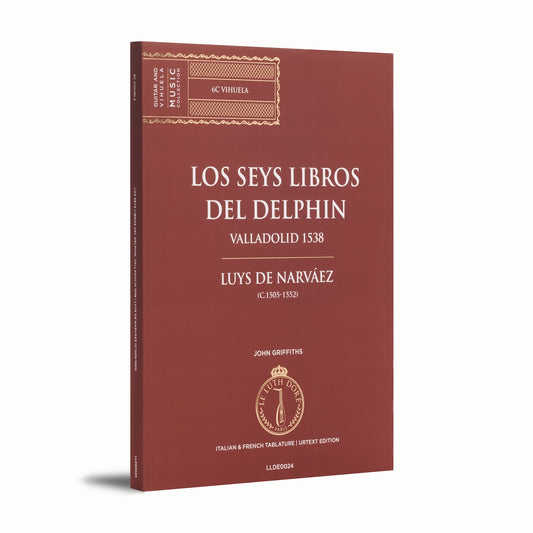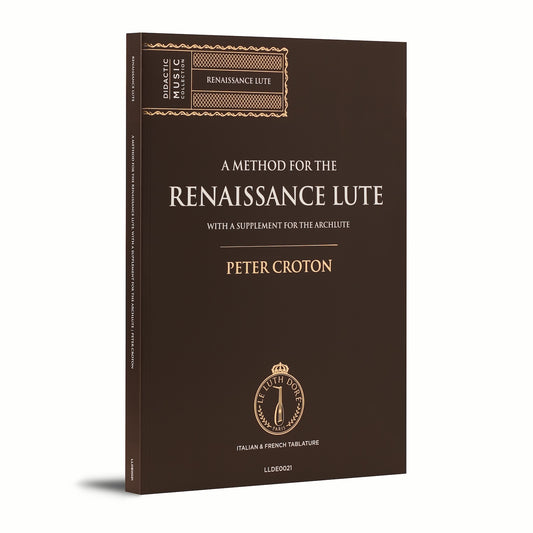Bach on the Lute – Nigel North and the Art of Polyphony
Partager

- 1. Nigel North: A Career Shaped by Bach’s Polyphony
- 2. An Editorial Project Founded on Philology, Analysis, and Performance Practice
- 3. Bach on the Lute – Volume I: Works Historically Associated with the Lute
- 4. Bach on the Lute – Volume II: Transcriptions of the Works for Solo Instrument
- 5. Ornamentation, Phrasing, and Expressive Grammar
- 6. Organology: 11- or 13-Course Lutes, Scordaturas, Extensions
- 7.
Baroque Rhetoric: A Foundation of Bach Interpretation
- 8. How to Play Bach – A Master Class by Nigel North
- 9.
Towards a New Reception of Bach on the Lute
- 10. The Bach on the Lute Volumes Edited by Nigel North
In the recent history of baroque-lute performance and of the reception of Johann Sebastian Bach, Bach on the Luteoccupies a decisive position. With the publication, by Le Luth Doré® Urtext Editions, of the Volumes I and II edited by Nigel North, the complete corpus of works for lute—whether originally conceived for the instrument or transcribed—appears for the first time in a unified, coherent, and fully musicological form. This monumental project is the result of several decades of performance, research, recording, teaching, and philological reflection. It now stands as a reference work for professional lutenists, baroque guitarists, scholars, and all specialists of the Bach repertoire.
Nigel North: A Career Shaped by Bach’s Polyphony

North recounts a formative memory: as a teenager immersed in the study of the Sonatas and Partitas for solo violin, he dreamt that Bach handed him a lute. This image, which might appear anecdotal, in fact assumes a symbolic dimension within his artistic trajectory: it encapsulates the ambition that would guide his entire work — to restore the lute to the heart of Bach’s discourse, profoundly polyphonic and reimagined through the act of transcription.
This work found its first concrete realisation in the 1990s with the recording series Bach on the Lute (Linn Records). The editorial volumes published by Le Luth Doré® extend this cycle in a form that is durable, structured, and transmissible.

An Editorial Project Founded on Philology, Analysis, and Performance Practice
Le Luth Doré® Urtext Editions are distinguished by a dual requirement: absolute fidelity to the sources and a carefully reasoned adaptation to the practice of contemporary lutenists. Nigel North situates his work within this editorial framework, articulating three principal axes:
a) Scholarly Respect for the Sources
- autograph manuscripts,
- contemporary copies from Bach’s circle,
- parallel versions for organ, harpsichord, violin, or cello,
- eighteenth-century lute tablatures (Schouster, Kellner, Falkenhagen).
The divergences, omissions, variants, and alternative readings are analysed and presented in a detailed Critical Commentary.

b) A Precise Organological Awareness
- the limitations of the 11-course or 13-course lute,
- the geometry of the left hand,
- the sustain and management of the bass line,
- the idiomatic positions of the baroque lute,
- the intrinsic resonance of the wound strings and the low diapasons.
c) An Edition Designed for Performance
The engraving in French lute tablature is entrusted to Jean-Daniel Forget. His expertise ensures a homogeneous, precise, and immediately readable presentation of the musical text. This clarity, essential for professionals as well as students, constitutes one of the pillars of the project.
Bach on the Lute – Volume I: Works Historically Associated with the Lute


Suite in G minor BWV 995
Suite in E minor BWV 996
Suite in C minor BWV 997
Prelude, Fugue and Allegro BWV 998
Prelude BWV 999
Fugue in G minor BWV 1000
Partita in E major BWV 1006a
BWV 995: an exceptional witness
Pieces pour la Luth à Monsieur Schouster constitutes the only authentic source showing how Bach explicitly conceived writing in French lute tablature..
BWV 996–998: an organological debate
Scholars hesitate between lute and Lautenwerk. North carefully analyses the structural evidence and proposes an idiomatic version for the baroque lute.
BWV 1006a: a model of Bachian transcription
Bach himself redistributes the voices, adds a bass line, and adapts the violin texture for a polyphonic instrument. North draws directly on this gesture for his own transcriptions.
J. S. Bach: Gavotte I & II from the Suite in G Minor (after BWV 995 & 1011) – Transcription for lute by Nigel North
Bach on the Lute – Volume II: Transcriptions of the Works for Solo Instrument


Sonatas and Partitas for violin BWV 1001–1006
Suites for cello BWV 1007–1012
Partita for flute BWV 1013
Guiding Principles
1. Adapted Transpositions
Certain works are transposed in order to correspond to the tessitura of the lute.
2. Reconstruction or Clarification of the Bass Line
A process inspired by Bach’s own practices as observed in BWV 995 and BWV 1006a.
3. Polyphonic Revoicing
The violin texture, often widely spaced, must be reconsidered in terms of the idiomatic positions of the left hand on the lute.
J. S. Bach: Andante from the Sonata in A Minor – Transcription for lute by Nigel North
This performance shows, in real time, the transformation of a violinistic texture into lute polyphony.
I remember going to a remarkable recital, one which I wish I had the ability to give: it was one of Nigel North's Bach recitals, and I was bowled over by how masterful and how musical it was. A real musical experience, something you don't always get from guitar and lute players and which, in general, is pretty rare.

Ornamentation, Phrasing, and Expressive Grammar
North’s editions adopt an ornamental grammar inspired by the French tradition (Mouton, Gaultier) and adapted to the expressive requirements of Bach:
- short and long trills,
- appoggiaturas,
- mordents,
- linked shakes,
- arpeggiated figures,
- right-hand and left-hand fingerings.
In this video, Nigel North highlights the way in which a trill, executed with precision and regularity, can guide the dynamics of phrasing, reinforce melodic continuity, and clarify the direction of the musical discourse. He thus emphasises the structural function of the trill in Bach’s musical language, in accordance with the practices of the French tradition, which he systematically integrates into his editions and into his approach to musical rhetoric.
Organology: 11- or 13-Course Lutes, Scordaturas, Extensions
Certain pieces can be played on an 11-course lute, but the large fugues require a full 13-course instrument. North also discusses:

- the required scordaturas,
- the limit of the fingerboard (position 9),
- fingering solutions for passages of high polyphonic density.
Baroque Rhetoric: A Foundation of Bach Interpretation
Baroque rhetoric, inherited from Antiquity (inventio, dispositio, elocutio, pronuntiatio), structures Bach’s musical thought. For North, understanding this rhetoric is essential to a coherent interpretation of Bach’s musical discourse.
In this filmed masterclass, Nigel North shows how the fundamental categories of baroque rhetoric — inherited from inventio, dispositio, and elocutio — illuminate the internal structure of Bach’s musical discourse. He explains how oratorical figures, harmonic tensions, guiding lines of phrasing, and expressive gestures interact to give polyphony a genuine argumentative logic. This demonstration highlights the profoundly oratorical dimension of Bach’s style and the need for the performer to approach each phrase as a carefully constructed segment of discourse.
How to Play Bach – A Master Class by Nigel North

Invited by tonebase — an international editorial platform specialising in high-quality filmed masterclasses dedicated to the interpretation of classical music — Nigel North recorded an exclusive session entitled Bach and the Art of Rhetoric. Filmed in the studio as part of their series devoted to baroque rhetoric, polyphony, and the interpretation of Bach’s works on plucked-string instruments, this session demonstrates in exemplary fashion how North weaves together stylistic analysis, historical understanding, and instrumental demonstration.
Perhaps he is the greatest performer of the instrument of all time. Transcriptions from cello music featured in the first half reminded us of North's wonderful fluidity and subtlety of expression, which enables him to knit together lines of melody in such a way as to imply rich harmony . . . the basic sincerity of his approach comes over well in live recitals . . . and the famous "Ciaconna" made a very moving concluding item to one this year's better Birmingham concerts.

Towards a New Reception of Bach on the Lute
The two volumes of Bach on the Lute, published by Le Luth Doré® Urtext Editions and the result of several decades of work, research, and interpretative reflection undertaken by Nigel North, constitute a landmark destined to leave a lasting imprint on the lute literature. Combining:
- philological rigour,
- organological awareness,
- polyphonic insight,
- pedagogical clarity,
- and high musical standards,
these editions make it possible to approach Bach in a way that is renewed, coherent, idiomatic, and profoundly respectful of his musical language.






